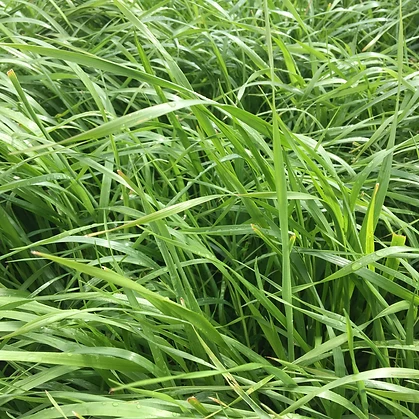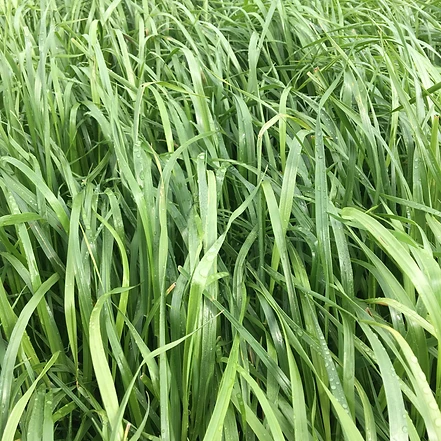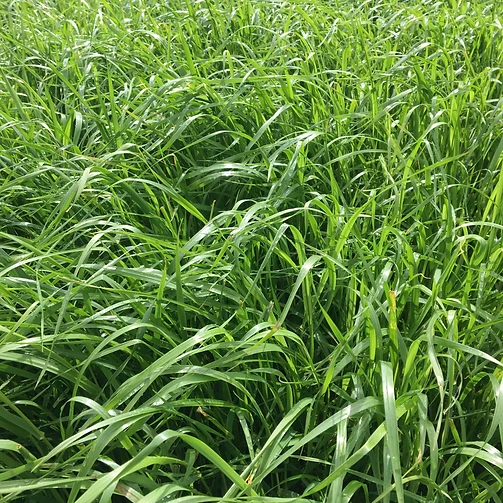United Kingdom
February 15, 2021
Grass seed is a valuable break crop and demand is growing. We caught up with Growers Club member Tom Reynolds and Andrew Bourne of seed merchant T Denne and Sons to find out more.
After eight years’ experience of growing grass seeds, Kent farmer Tom Reynolds is in no doubt of the crop’s value to his rotation.
The whole ethos of the farm business is to enhance the soil and reduce inputs, to help meet a long-term goal of organic certification.

We want to improve soil structure and fertility and grass is a great way of doing both,” says Tom, who manages 250ha of mixed crops from Pent Farm, near Postling.
“Another key reason for growing grass seeds is to reduce our reliance on agrochemicals across the whole rotation.”
Blackgrass control is a key focus. The two-year grass seeds break, which includes grazing and silage cuts, helps achieve this with minimal chemical inputs. Tom has also been able to reduce the amount of herbicide in following crops and he is using at most one application of fungicide a year in his grass seeds.
All seed is grown in two-year leys, so he has halved cultivations on that area, slashing field and machinery costs while easing drilling pressure in the autumn and reducing the potential for soil damage.
Tom concentrates on forage species, growing 38ha of hybrid ryegrass and 30ha of Italian ryegrass, and looks after the agronomy on a further 20ha. A 30ha block of amenity red fescue grass is going into its last year, and will be replaced with ryegrass.
RGT Cordial, a candidate hybrid tetraploid variety, helps with the farm’s zero-tolerance approach to blackgrass thanks to its aggressive growth habit which helps smother the competition.

RGT Cordial
This variety also has exceptional disease resistance and has become a firm favourite in seed mixtures across the country, thanks to its persistence and high forage yields.
Tom also grows RGT Syntilla, a high-yielding diploid Italian ryegrass that offers vigorous early spring growth and strong crown rust resistance, which has been a valuable addition to the grass seed programme at Pent Farm over the past two years.
Grass seed management is relatively straightforward. Ryegrass is drilled ensuring minimum soil disturbance in late summer and DAP is applied if needed.
Apart from an application of ethofumesate when required and 120kg/ha of nitrogen in early spring, the crop is left to grow undisturbed until late April or early May when a cut of silage is taken.
A further 90kg/ha of nitrogen is applied to the aftermath, and a fungicide to control rust as necessary, before the seed is combined using a stripper header, which has revolutionised the ease of the operation.
The crop is then grazed over winter before being closed up for the next silage cut ahead of the final seed harvest.
Blackgrass control has been very successful. “We take the silage cut before blackgrass sets a seed head, which is key to control,” says Tom.
“We sometimes also take an early autumn cut, so this and grazing allows plenty of opportunity for cultural control.”
Direct-drilled beans or wheat are sown after grass seeds.
“The advantage of beans is that it widens the window for volunteer ryegrass control and to give any surviving weed grasses another hit,” says Tom.
Many growers think grass seeds are a difficult crop, but with a bit of thought they can be a very valuable addition to the rotation, he adds. “We’ve certainly found that the benefits far outweigh the negatives.”
Effective management aids grass weed control
Grass seeds make an excellent break crop to alternatives like oilseed rape and pulses, which are either under pressure agronomically or offer limited gross margin potential, says Andrew Bourne, seeds manager at T Denne and Sons, Ashford, Kent.
“As Tom has found, grass seed crops also offer an effective way of tackling herbicide-resistant blackgrass in arable rotations, as well as brome,” he adds. “Blackgrass in particular doesn’t like undisturbed soil, competition or constant defoliation.”
Growers with severe grassweed burdens cannot produce grass for seed, but can of course grow it for silage and grazing, achieving the same cultural control benefits.
Low levels of blackgrass and brome may be permitted in forage varieties grown for seed. “We prefer clean land, but we can cope with low levels of these weeds, by using good cultural techniques and ethofumesate,” says Andrew.

RGT Syntilla
“Growers can reduce the problem by managing stubbles before sowing grass seeds and using minimum disturbance establishment techniques to avoid mixing weed seeds through the profile.
“With hybrid and Italian ryegrasses, a silage cut is taken usually around the end of April, while perennial ryegrass is grazed to the end of March. This defoliation encourages the crop to put more energy into seed production and ensures there is not too much foliage at harvest."
“It is also particularly effective at reducing grassweed pressure as it removes heads before they can produce viable seed. Ryegrass regrowth also results in very significant competition, which can dramatically reduce blackgrass populations.”
Resistant ryegrass
Any land with a ryegrass weed problem cannot be considered for seed production, says Andrew.
“Herbicide-resistant Italian ryegrass has been found in parts of Kent since the 1980s. Although a background problem it has brought resistance through to relatively recent herbicides.
“We assess all fields carefully before going into seed production as we cannot run any risk of contamination.”

Some potential growers are worried about introducing grass into an arable rotation, fearing volunteers may eventually morph into resistant weeds.
“We don’t see any problem here, provided care is taken managing stale seedbeds,” says Andrew. “Don’t rush in after the combine has left the field to prepare for the following crop, as ryegrass seed will become dormant if you bury it.
“Leave it to flush and then spray off before drilling the next crop with as little soil disturbance as possible. Appropriate herbicide programmes will finish the job in following arable crops.”
Tom is keen to scupper myths that grass seed production could add to the resistant ryegrass problem.
“We don’t have any resistant ryegrass on the farm and we keep a very close eye out to make sure it stays that way, as it would make seed production very difficult.
“Our system of stale seedbed management and minimal disturbance cultivation methods, coupled with good practice across the rotation, has proved very effective at controlling volunteers.
“They don’t survive long enough to pose a threat – if they did, we wouldn’t be growing the crop.”
A growing market
The UK is only 40% self sufficient in grass seed production, leaving plenty of room for expansion, particularly as some key producing countries such as Denmark, Germany and Holland are diverting grassland into conservation schemes, restricting supplies and putting upward pressure on prices.
“UK growers are waking up to this demand, and rotational necessity is also driving change,” says Andrew.
“Growers must, however, accept that grass seed production is a specialist crop, requiring specific agronomy input, as well as tailored advice to manage nutrition, grazing/conservation management and harvesting.
“As a company we offer all growers a management service, and work with the on-farm agronomist to maximise results. Harvest management and drying are critical factors that need close consideration.
“In addition to forage types, we have good demand for non-forage types, such as amenity PRGs and fescues. These types have no forage value and perform best in high stress sites where forage varieties may underperform.”
Grass seeds benefits
- Valuable break crop/species diversity
- Reduces inputs across rotation
- Improves soil structure
- Adds organic matter
- Livestock grazing adds fertility
- Additional income stream through grazing and forage
- Reduces autumn workload
- Sustained demand
To learn more about our grass portfolio click here.